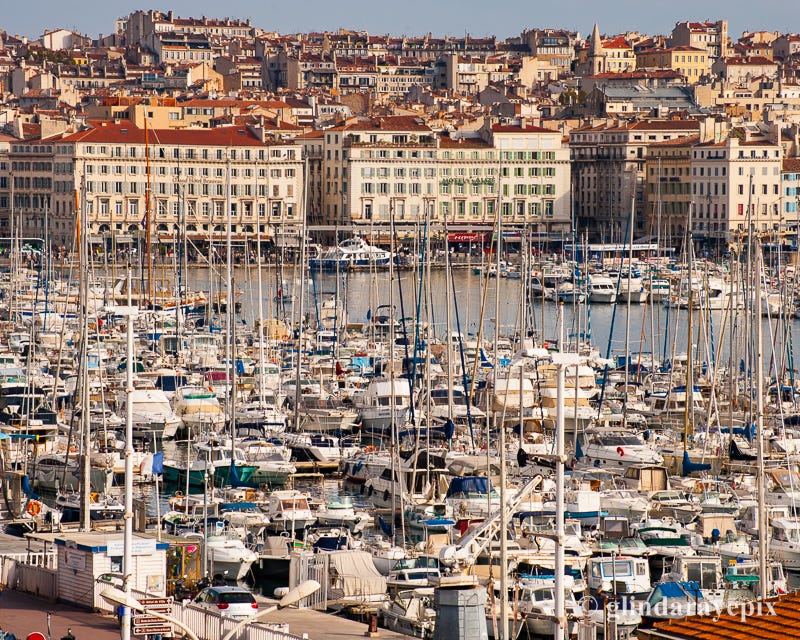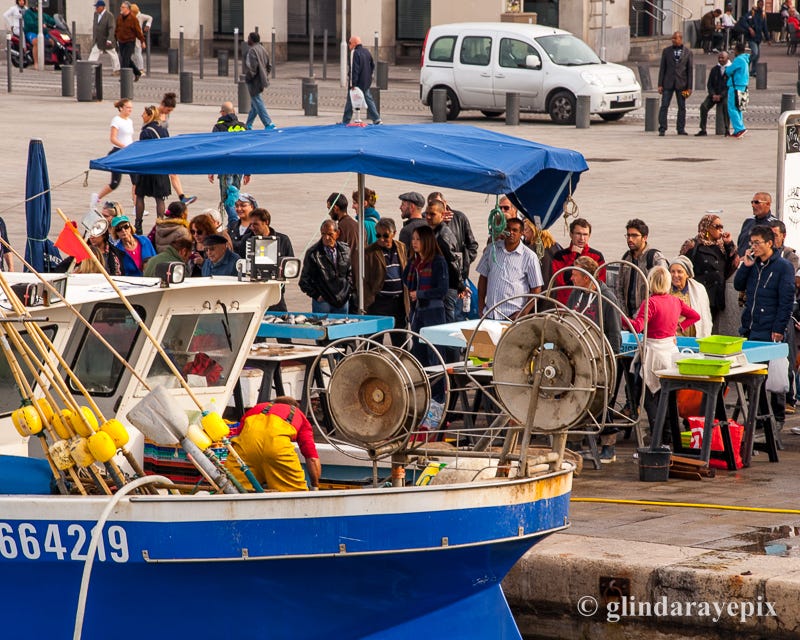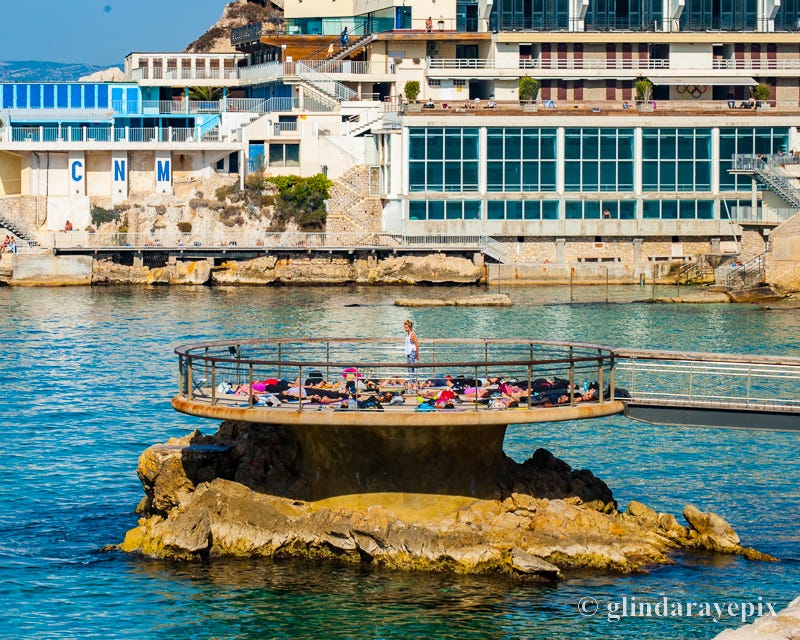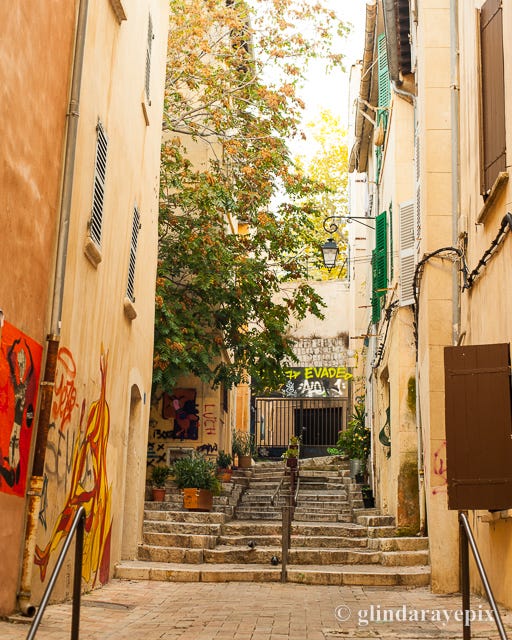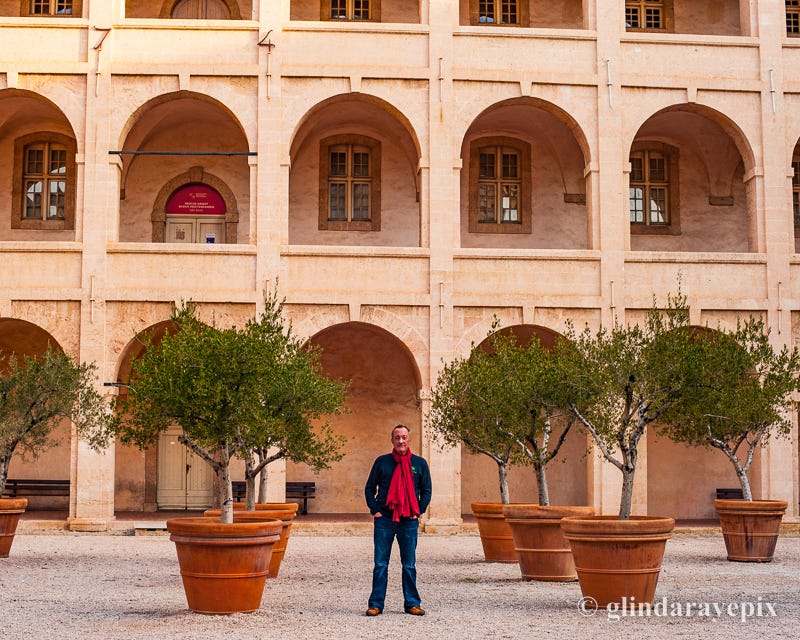The Thing About Marseille
Gangsters, Iconoclasts, and Revolutionaries with a Gourmet French Accent
There's just no sugarcoating Marseille.
Ever since its founding by the Greeks in 600 BC, the city and its rowdy citizens, the Marsellais, have been nothing but trouble for any regime that attempted to control them. Hugely profitable trouble, of course, given the city's pre-eminence as a trading entrepôt between the Mediterranean, the Far East (through the Suez Canal), and central Europe. But successive rulers of Burgundy, Aragon, and France have alternated between sacking, garrisoning, imprisoning, and quarantining the city, while defending it against all manner of invaders.
The worst of those invaders, the Bubonic Plague, entered Europe here in the 14th century, then returned in 1720, thanks to one Jean-Baptiste Chataud and his ship le Grand-Saint-Antoine. Chataud was carrying a cargo of cotton and silk, too profitable for the penny-wise-pound-foolish city fathers to exclude, but a perfect vector for the bacteria Yersinia pestis and the fleas that carried it. Over the next two years, the last of many European plagues nearly wiped out Marseille and the surrounding towns of Provence.
In the 1930s, when organized crime was at its height in America and Europe, the colorful Corsicans François Spirito and Paul Carbone (the "Emperor of Marseille") turned this picturesque port into the hub and refining center for the Indochinese-Turkish-American heroin trade later known as the French Connection. With the connivance of governments on both sides of the Atlantic, the Union Corse exchanged thousands of pounds of heroin for millions of American dollars, until the network finally collapsed in the 1970s.
Even today, the northern quartiers of Marseille remain outside the reach of French officialdom. Immigrants, primarily from the Middle East and northern Africa, inhabit and control some of the worst slums of Europe. We drive through every time we visit the city—and that's as often as we can—but have never given a thought to stopping there.
Yet today, the best of Marseille is as cool and hip as they come. From our hotel across the street from Paul Carbone's former digs at the base of the Vieux Port, we can walk and take buses and ferries anywhere we want to go. With a car, the urban beaches south of the city lead through some of the most spectacular scenery in France to the magical fishing port of Cassis. Taking that larger arc as our frame of reference, the following are some of our favorite places and pastimes:
Les Calanques:
The first thing you think of when you descend to the sea through these limestone cracks and crags is the awkward shifting of casks of illegal booze from leaky offshore boats onto the backs of willing mules. The narrow dirt tracks drop precipitously into these hamlets and explain why most people, other than mountain climbers, choose to arrive by sea. Some of the most spectacular Calanques can only be reached with diving gear. In summers, with the threat of brush fires, outsiders are excluded altogether.
Le Vieux Port:
The heart of old Marseille and the perfect, stone-paved promenade for an evening stroll after dinner. The twin, sand-colored forts at the seaward end were originally built with their canons trained not on the sea, but on the rebellious population within. Today they make for life-affirming harbor breezes and spectacular Mediterranean sunsets. Our favorite activity in the port involves jostling with the crowds who gather when the fishing boats come in to offload and sell their catches.
Le Panier:
On the northern side of le Vieux Port, this steep neighborhood once housed a large Corsican population that incubated its criminal underworld into the dreaded Union Corse, France's occasionally stylish answer to the Italian Mafia. Today, you can find a thorough introduction to the island's cuisine in the hip neighborhood brasseries, while rubbing elbows with the yuppies who have gentrified its streets. One of our favorite spots here is la Vielle Charité, an ancient beggar's prison given a makeover in 1968 at the behest of the French author/politician André Malraux.
Le Château d'If:
The most famous resident of this island prison just outside Marseille harbor never spent a night there—or anywhere for that matter. The fictional Count of Monte Cristo—invented by Alexandre Dumas (père) in 1844—served fourteen years before escaping to fabulous wealth and a revenge tour worthy of his Marsellais pedigree. Like Alcatraz in San Francisco harbor, this fortress was billed as escape-proof—only, unlike Alcatraz, it actually was. From the boat on our approach, the three-story Château looks like a quaint, gorgeous relic, until you descend into the damp, dark dungeons where generations of prisoners simply melted out of history.
Pastis:
When absinthe was outlawed in France and the United States (some say for its aphrodisiacal properties), Paul Carbone switched from prostitution to smuggling in enough Pernod to keep the Marsellais deliriously happy. Later on, the Marsellais firm of Paul Ricard took over the market with a locally blended pastis that dominates the business today. Anise is the key ingredient, but Ricard's secret herb-and-spice recipe has never been divulged. Most people mix the clear, aromatic liquid with water to give it the characteristic yellow glow. On a warm Marseille evening, we prefer ice, when we can get it.
Bouillabaisse:
In 1980, eleven Marseille restaurants signed up to la Charte de la Bouillabaisse, a contract that committed them to preserving the integrity of this complicated and thoroughly local dish. Scorpion fish, skate, mullet, conger eel, John Dory, and Cigale (a type of lobster from the Calanques). Saffron, fennel, tomatoes, rouille (a sauce made with the distinctive local garlic and olive oil), and a healthy dash of pastis. Presentations vary, but our favorite haunt is the hyper-expensive le Miramar at the inland end of le Vieux Port.
The Thing…
In all its bustle and history, Marseille is a tale of multiple worlds wedged up against each other with as little in common as East and West Beirut along the infamous Green Line. Nevertheless, when dealing with outsiders, the Marsellais tend to band together, because they all speak the same language—and that language expresses a sense that this is a city apart, not quite French and not quite foreign, not quite lost and not quite respectable. The only way to describe this hyperactive, sometimes seedy, but always fascinating beehive is to use its name. Marseille will always be with us, whether we love it or not. And as it happens, we do.




